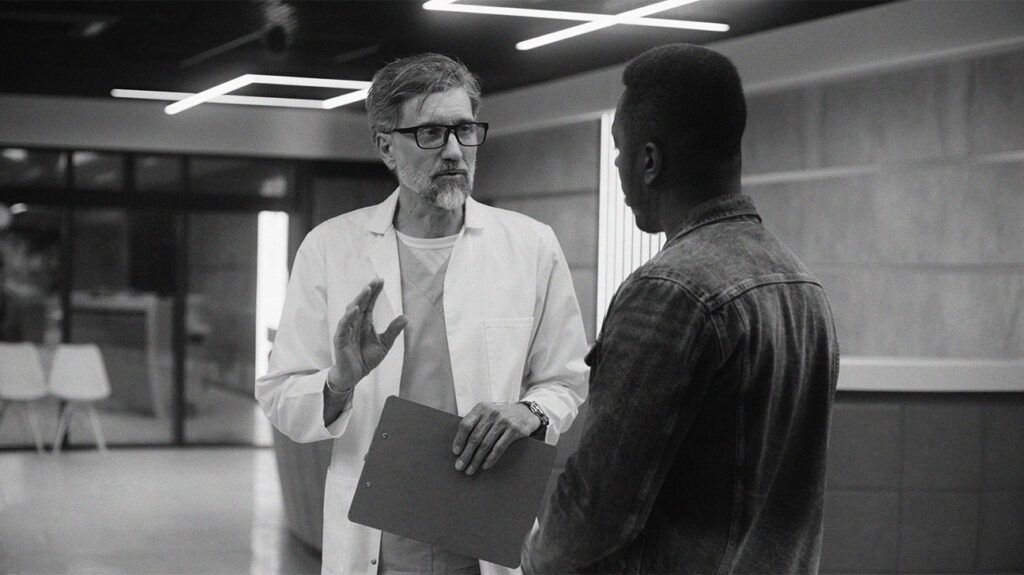Testicular cancer mostly develops in young and middle-aged males. The average age at diagnosis is 33 years, but it can develop earlier or later.
Testicular cancer occurs when cells divide uncontrollably in one or both testicles. Various factors can increase a person’s risk, including their age.
Read on to learn more about the age at which a person can get testicular cancer. This article also discusses risk factors, testicular cancer tests, and more.
A note about sex and gender
Sex and gender exist on spectrums. This article will use the terms “male,” “female,” or both to refer to sex assigned at birth. Click here to learn more.

According to the American Cancer Society (ACS), the average age for testicular cancer at the time of diagnosis is
Testicular cancer is the most common cancer for males ages
The United Kingdom’s National Health Service (NHS) suggests a wider range, with 15–49 years the most common age range at diagnosis.
Teenagers and adolescents can develop testicular cancer. The ACS estimates that
The American Urological Association (AUA) states that testicular tumors rarely develop before puberty. They suggest that testicular cancer makes up about 1–2% of all cancers in infants and young males.
As well as being between the ages of
- an undescended testicle, also known as cryptorchidism
- a type of cell change called testicular carcinoma in situ
- previous personal or family history of testicular cancers
- Klinefelter syndrome, a genetic condition in which a male has an extra X chromosome
- HIV
A person can contact their doctor for advice if they have any concerns about the risk factors for testicular cancer.
Some clinicians also suggest that all males check their testicles at home after puberty, although this is a person’s decision.
A person with risk factors for testicular cancer, such as cryptorchidism and testicular carcinoma in situ, may need to perform regular self-checks and would benefit from having a doctor check for testicular cancer at appointments.
How to perform a testicular cancer self-check
The best time for a self-check is when the scrotum relaxes after a warm shower or bath. Perform this check while standing up.
The steps are as follows:
- Check both testicles by rolling them between the thumb and forefinger. Be gentle but firm, feeling the entire surface of the testicles. The testes should feel firm all the way around.
- Look for lumps, swellings, pain, or other features that seem unusual.
- Find the tube-like structures above and behind the testicle, called the epididymis and vas deferens. Get to know how these feel and monitor any changes over time.
Check for changes in size, texture, and shape at least once a month. It is crucial to follow up on any changes with a doctor. Testicular cancer can spread quickly, but it is curable.
Learn more about performing a testicular self-exam.
Doctors diagnose testicular cancer using several methods. This often occurs after they identify a change in a physical checkup or after a person finds a lump or change during a self-exam.
These
- Physical and medical exams: A doctor asks about symptoms and overall health. They will also check the testicles for anomalies. If they suspect testicular cancer, they will request further tests.
- Scrotal ultrasound: An ultrasound allows doctors to see suspicious lumps inside the testicles. A doctor may request other tests if they believe the cancer may have spread, such as a chest or abdomen X-ray.
- Blood tests: These check for proteins and hormones that some types of testicular cancers make, known as tumor markers. Not all testicular cancers produce tumor markers. Doctors should also measure tumor markers before and after treatment to track progress.
A doctor will stage the cancer after removing it during surgery. This can help them check if it has spread.
Learn more about testicular cancer stages.
Here are some common questions about testicular cancer.
Can you get testicular cancer at 16?
Males can get testicular cancer at 16 years of age. It is around the teenage years, or after puberty, that a person’s testicular cancer risk increases.
Can you get testicular cancer in your 20s?
The National Cancer Institute suggests that testicular cancer is the most common type of cancer in males between the ages of
Is testicular cancer fatal?
Like many other cancers, testicular cancer can be fatal, but this is very rare. Around
Testicular cancer is the most common cancer in males ages 20–39 years, with the most common age of diagnosis being around 33 years.
Younger males and teenagers may also get testicular cancer, but it is rare before puberty. People with an undescended testicle or testicular carcinoma in situ have a particularly high risk of developing testicular cancer.
From puberty onward, self-checks can help a person identify possible symptoms of testicular cancer. This can help doctors find and treat testicular cancer early, providing the best chance of survival. A doctor may also physically examine the testicles during regular checkups.
